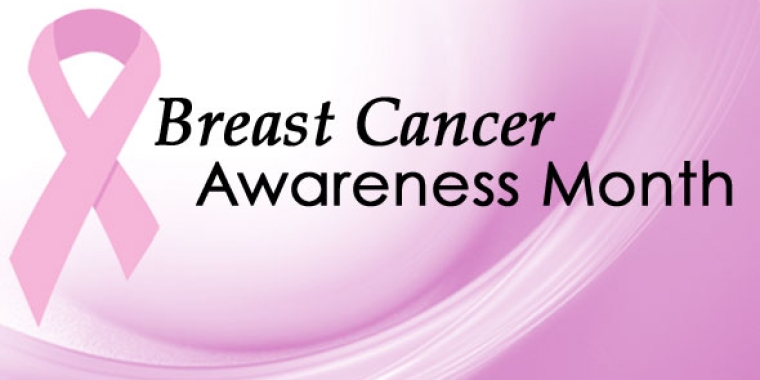
31 Truths About Breast Cancer
Senator Michael H. Ranzenhofer
October 20, 2016
-
ISSUE:
- Breast Cancer Awareness

As many of you know, October is Breast Cancer Awareness Month. Acknowledging the 31 days in October, Senator Ranzenhofer and the Breast Cancer Coalition of Rochester want to share 31 Truths About Breast Cancer. For breast cancer survivors, awareness is only the first step. Right now, over 3 million women in the United States are living in the aftermath of a breast cancer diagnosis.
Senator Ranzenhofer supports the families here in our own community who have been impacted by breast cancer. Will you join him?
31 Truths About Breast Cancer - Compiled by the Breast Cancer Coalition of Rochester
1. More than 3 million women in our country are now living in the aftermath of a breast cancer diagnosis. According to the National Cancer Institute’s Surveillance, Epidemiology, and End Results (SEER) Program, in 2013 there were approximately 3,053,450 women alive who had a history of cancer of the breast in the United States.
2. Excluding skin cancer, breast cancer is the most commonly diagnosed cancer among women in the United States. Female breast cancer represents 14.6% of all new cancer cases in our country.
3. The biggest risk factors for breast cancer are being a woman and growing older. The median age of diagnosis is 62.
4. A woman in the United States has a 1 in 8 chance of developing breast cancer during her lifetime. It is estimated that a woman age 30 has about a 1 in 227 risk of developing breast cancer in the next 10 years; for a woman age 40, it is about 1 in 68; for a woman age 50, it is about 1 in 42; for a woman age 60, it is about 1 in 28; and for a woman age 70, it is 1 in 26.
5. Breast cancer awareness campaigns have helped move the disease from behind closed doors but have not had a significant impact on the incidence of Stage 4 disease or on mortality. The incidence of Stage 4 breast cancer disease has not changed since 1975. In 2016, an estimated 40,450 women in our country alone will die as a result of breast cancer.
6. True prevention means stopping breast cancer before it develops. As a result of early detection awareness campaigns, which do not prevent breast cancer, there has been an increase in over-diagnosis and over-treatment for many women, involving surgery, radiation, and chemotherapy to treat non-life threatening cancers.
7. It is estimated that 246,660 new cases of invasive breast cancer (cancer that has spread from where it started in the breast into surrounding, healthy tissue) will be diagnosed among women in the U.S. in 2016. In addition to invasive cancers, more than 61,000 cases of non-invasive (in situ) breast cancer will be diagnosed.
8. Men do get breast cancer. While less than 1% of new breast cancer diagnoses occur among men, it is possible for men to develop the disease. It’s estimated that about 2,600 new cases of breast cancer will be diagnosed in men in 2016. For males, the lifetime risk of getting breast cancer is about 1 in 1,000.
9. The overwhelming majority (approximately 85%) of women diagnosed with breast cancer have no relatives with the disease. A family history is only one risk factor. Other risk factors include getting older, benign breast problems, early exposure to ionizing radiation, having children later in life or not at all, longer exposure to estrogen and progesterone, lack of exercise, and drinking alcohol.
10. An estimated 155,000 Americans are currently living with metastatic breast cancer, which occurs when cancer in the breast spreads to other parts of the body, most often the lungs, liver, bones, and brain. Approximately 20% to 30% of people first diagnosed with early stage disease will later develop advanced or metastatic breast cancer.
11. Complementary therapies are often used in addition to medical treatments such as surgery, radiation, chemotherapy and hormonal therapy. These may include nutrition and exercise, Traditional Chinese Medicine, Ayurveda, homeopathy, acupuncture, mindfulness meditation, yoga, massage, Feldenkrais, Reiki, Qi Gong, Tai Chi, and support networking groups. Before using any complementary therapy, patients should talk with their care team to make sure all aspects of their cancer care work together.
12. White women are more likely to receive a diagnosis of breast cancer, but African American women have a higher mortality rate. The mortality rate for breast cancer for African American women is about 31 per 100,000 women compared to 22 per 100,000 white women. Comparatively speaking, Hispanic, Asian/Pacific Islander, and American Indian/Alaska Native women have lower mortality rates compared to white women.
13. All breast cancers are not the same, just as breast tumors do not all grow at the same rate or spread in the same way. It is not the size of a tumor that determines the aggressiveness of breast cancer but rather the tumor biology and microenvironment (the normal cells and molecules that surround cancer cells). Some breast cancers are small, found early, and yet are deadly. Some are fast growing. Some grow slowly, are found by mammograms and are treated, but would never have been life threatening.
14. We know that there are several types of breast cancer based on the biology of the tumors. These subtypes respond to different treatments and have different prognoses. Breast tumors are currently classified using three primary immunohistochemical (IHC) tumor markers: Estrogen Receptor (ER), Progesterone Receptor (PR), and Human Epidermal Growth Factor Receptor 2 (HER-2/Neu). The term “Triple Negative” indicates none of these markers are prevalent.
15. There is a possibility that environmental estrogens play a role in diseases such as cancers of the breast, uterus, and ovaries. Environmental estrogens are a variety of synthetic chemicals and natural plant compounds thought to mimic estrogen in the body. They may behave like estrogen in the body or may block the natural hormone. These include pesticides such as the now-banned DDT and polychlorinated biphenyls (PCBs); Bisphenol-A (BPA); natural plant products in our diet; and a host of other chemicals.
16. When it comes to decreasing risk of breast cancer, become an informed consumer. Look around your environment. Read product labels and don’t purchase a product that may be harmful to you or your family.
17. When it comes to breast cancer, help lower your risk by making responsible health choices: Eat a healthy diet, learn how to cope with increasing stress, integrate exercise into your life, identify and eliminate your exposure to environmental risk factors as much as possible, and advocate for evidence-based change.
18. At least 900 synthetic compounds in industrial and commercial products have been identified as Endocrine disruptors (EDCs) - compounds that mimic or interfere with natural hormones. Many have been specifically shown to make estrogen-dependent human breast cancer cells grow in lab tests. EDCs that mimic estrogen cause concern because of their potential links to women’s health. These compounds are found in everyday products: some pesticides, detergents, and plastics.
19. Epigenetics studies the processes regulating how and when certain genes are turned on and turned off. Cancer affects these processes. Nutrigenomics looks at how foods and nutritional supplements influence gene expression. Different foods may interact with specific genes to increase or decrease risks of common diseases such as Type II Diabetes, obesity, heart disease, stroke, and certain cancers by modifying gene expression.
20. Breast cancer is ultimately a disease of malfunctioning genes. Lifestyle factors can generate growth-promoting signals to cells already primed to become cancerous because of changes in these genes. Most people are born with normal genes but during the course of a lifetime, genes can become damaged (mutated) in various cells and lead to cancer.
21. A growing body of evidence links synthetic chemicals to the rising incidence of breast cancer. Parabens, phthalates and other hormone disrupting chemicals are found in cosmetics, beauty products, and in women’s bodies. Federal law in the US allows for the usage of these chemicals, and others, that are often banned in other countries. You have a right to know if the products you use contain compounds that may increase your risk of disease, including breast cancer.
22. To end breast cancer, we need more focus on understanding how to prevent the disease from developing, and how to stop the disease from spreading to other parts of the body. We need a greater understanding of how to stop the aggressive cancers that are not detected with mammography, how to stop breast cancer from recurring, and how to prevent it from metastasizing to other parts of the body and becoming lethal.
23. Most women who find their own breast cancer do so as part of normal routines (showering, getting dressed, etc.) and not during systematic monthly breast self-exams. About 80% of breast cancers not discovered by mammography are discovered by women themselves. Knowing the landscape of your body and noticing slight changes is always wise. Becoming familiar with one’s breasts can help detect breast cancers that mammograms may miss.
24. If you are diagnosed with breast cancer, ask questions. Ask about all treatment options for your specific tumor type. Ask about costs and side effects of treatments. Ask how and why a particular treatment option has been recommended for YOU.
25. According to the American Cancer Society, women ages 40 to 44 who are of average risk of breast cancer should have the choice to start annual breast cancer screening with mammograms if they wish to do so. All women should be familiar with the recognized benefits, limitations, and potential harms associated with breast cancer screening.
26. Mammography is not prevention. Getting regular mammograms does not prevent you from getting breast cancer. Mammography is a screening test to detect cancer already present in the breast. It does not prevent cancer, nor will it definitively detect the disease. If you have a personal history of breast cancer, never rely on technology as your sole method of surveillance. Knowing what is normal for you is important.
27. The current infrastructure and focus in breast cancer has not led to significant progress in ending the disease or in preventing deaths from the disease. This is true for research and health care and also advocacy: more of the same will not produce different results.
28. Five year breast cancer survival rates do not give an accurate picture of progress against breast cancer. Because breast cancer takes many years, sometimes even decades, to develop and spread throughout the body, breast cancer survival statistics, particularly five-year survival data, do not accurately portray the impact of breast cancer, or the progress or lack of progress over time.
29. Hormone Replacement Therapy (HRT) may increase your risk of breast cancer. The Women's Health Initiative (WHI) clinical trials, launched in 1991, studied a group of 161,808 generally healthy postmenopausal women for the effects of HRT, diet modification and calcium and vitamin D supplement use on heart disease, fractures, and breast and colorectal cancer. Results from the trial on HRT, published in 2002, found that while the estrogen-only replacement therapy did not increase breast cancer risk, the risks far outweighed the benefits in the estrogen-plus-progestin arm. Overall, there was a 24% increase in the risk for breast cancer due to estrogen-plus-progestin.
30. In many cases, more treatment is not necessarily better treatment. Many of the advances in recent years have not been discoveries of new treatments, but rather discoveries that less invasive treatments are as effective as more invasive and/or more toxic standard of care. There is a growing recognition that more treatment is not necessarily better treatment. And, in fact, less is often better because of the reduction in long-term side effects, which are sometimes severe and occasionally fatal.
31. No one needs go through breast cancer alone. If you or a loved one receives a diagnosis of breast cancer, the Breast Cancer Coalition of Rochester is here to help. The Coalition offers education and support programs, as well as advocacy for those uninsured or underinsured. The Coalition is a full-scope, grass-roots breast cancer organization serving survivors and families throughout the Finger Lakes Region of Central and Western New York. We can help you find resources in your own community.
The Breast Cancer Coalition of Rochester serves the women (and men) living in our community who have been impacted by a breast cancer diagnosis. Headquartered at 1048 University Avenue in Rochester, NY, the Coalition provides support, education, advocacy, and funding for breast cancer research initiatives right here in our region. Many of their programs and services have been opened to women diagnosed with gynecological cancers. If you or someone you know has been diagnosed with a breast or gynecologic cancer, please call the Coalition at 585-473-8177. You can also visit their website at www.bccr.org for more information.
Sources include:
www.bcaction.org
www.bccr.org
www.breastcancer.org
www.breastcancerdeadline2020.org
www.breastcancerfund.org
www.cancer.gov
www.cancer.org
www.cdc.gov
www.mbcn.org
www.nih.gov
www.silentspring.org
Share this Article or Press Release
Newsroom
Go to Newsroom
ECC Celebrates New Center for Nanotechnology
February 10, 2017

Ranzenhofer Pushes Upstate Ride-Sharing Bill During Senate Debate
February 7, 2017

FFA Presents to Senate Agriculture Committee
February 7, 2017
